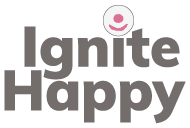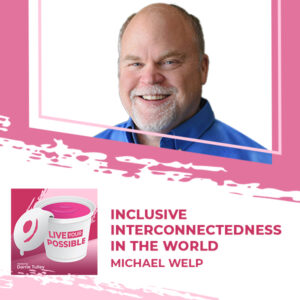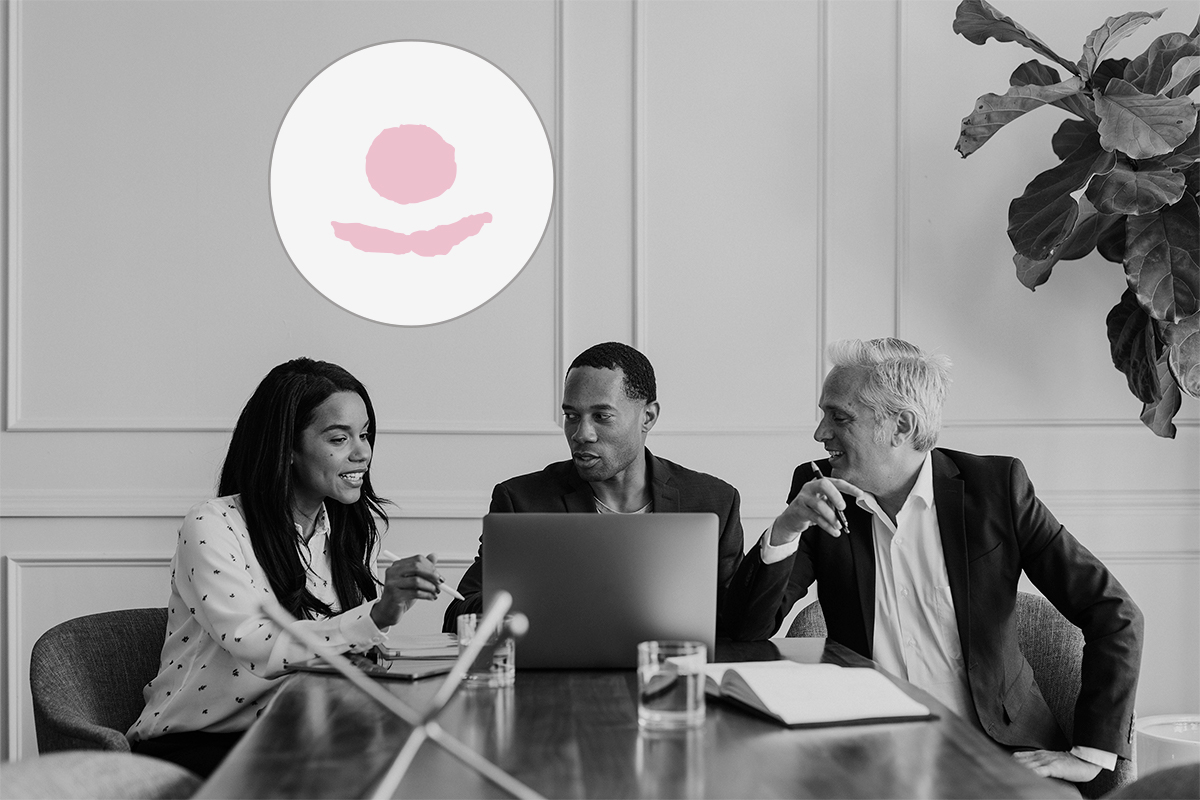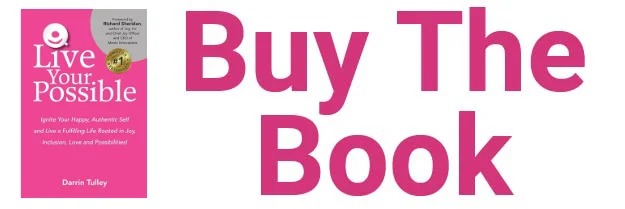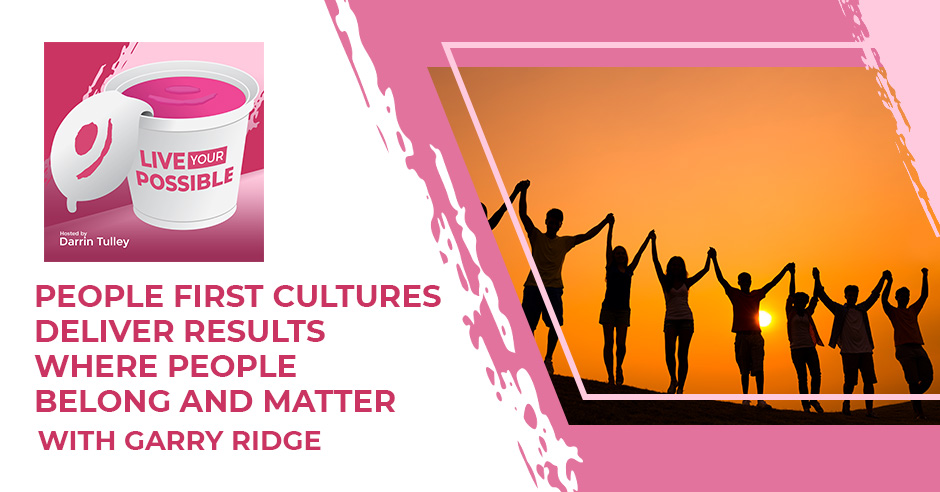
True leadership is not about marking papers, it’s about empowering people to excel. By putting people first, we create a culture of belonging, respect, and inspiration. Only then can we achieve true greatness in both work and life. In this episode, Garry Ridge, the Culture Coach and Chairman Emeritus of WD-40 Company, delves into his philosophy of putting people first in company culture. He shares his leadership techniques and principles of his business philosophy, “Don’t Mark My Paper, Help Me Get an A.” Drawing on Aristotle’s quote, “Pleasure in the job puts perfection in the work,” Garry stresses the importance of creating a culture where people feel they are important and respected. He believes that this approach leads to happier workplaces, families, and communities, and that the results naturally follow. Tune in and learn how to create workplaces and communities where people belong and matter.
Discover more about Garry Ridge:
- The Learning Moment: Garry Ridge
- The Purpose Summit: Garry Ridge
- The Great Resignation or Great Escape? Create the Culture that Invites Great Talent to Run to You
- How Garry Ridge Made WD-40 a Happy Billion-Dollar Business
- Ignite Happy Chapter 8: Skillsets Unleashed
—
Watch the episode here
Listen to the podcast here
People First Cultures Deliver Results Where People Belong And Matter With Garry Ridge
I’m excited to get reunited with my friend, Garry Ridge, the Culture Coach, and Chairman Emeritus of WD-40 Company. I met Garry in Copenhagen, Denmark in 2018. He’s a great guy. Check it out. Garry has many years of experience as Chairman and CEO of WD-40 Company. He’s a native of Australia. Mr. Ridge is also an Adjunct Professor at the University of San Diego where he teaches the principles and practices of corporate culture in the Master of Science and Executive Leadership Programs.
Garry’s philosophy on company culture is based on Aristotle’s quote, “Pleasure in the job puts perfection in the work.” He also co-authored a book with Kent Blanchard outlining his effective leadership techniques, titled, Helping People Win at Work: A Business Philosophy Called “Don’t Mark My Paper, Help Me Get an A.”
Garry is an authentic leader, as authentic as you can get. He’s on a mission to create happier workplaces, which leads to happier families and communities. He says he never has made a mistake in his life, which is worth finding out why that is. Tap into how Garry leverages a people first approach to lead WD-40 as a tribe with faith where results would most certainly follow. Sit back and find the learning moments from Garry Ridge as you pursue how to join the club in creating workplaces in communities where people want to run to. Enjoy the show.
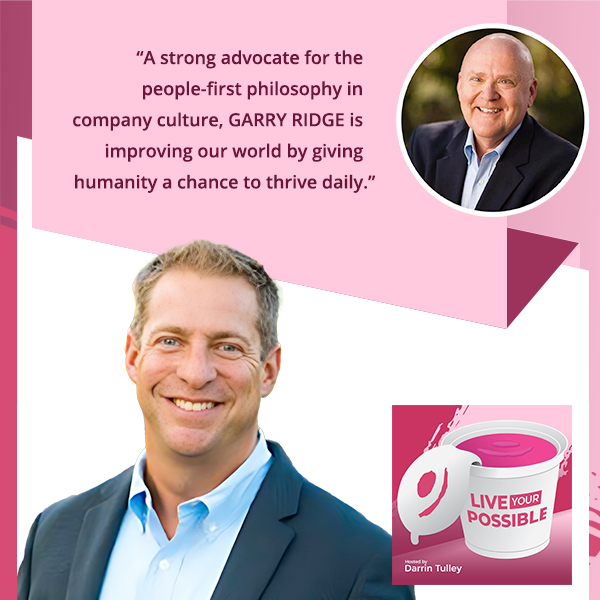
Garry Ridge, I appreciate you joining the show. I’m excited to be here. It’s great to see you again. I can’t believe you’re getting recognized in so many different facets. You’re a top ten named CEO Leader of the World. You’re a top 200 Leader on the Power List in 2023. You’re also in the top 30 as far as culture and organization, as far as coaching, and how you’re influencing the world. I’m honored to be here with you, so welcome to the show.
Thank you. They’re talking about someone else. That can’t be me.
You’re amazing. The first time we met was in 2018. You were a keynote speaker at the Happiness at Work Conference in Copenhagen, Denmark. I was a little nervous being from the States going over there by myself. We had to wear all these unique name tags. I remember walking to the first person that was in front of me and I don’t know if you remember this. It was you. I realized you were the keynote speaker and I started to get nervous. What I appreciated about you is you are real and you’re the nicest guy. You were kind. You’re welcoming. You made me feel at ease and you’re doing that for the world. I appreciate you from the day I met you.
Thank you so much. As I often said, life’s a gift. Don’t send it back unwrapped. We need each other a lot. What we should be doing is reaching out and helping people.
You’re doing that, and I love how we’re at this Happiness at Work Conference at that time. You talk about how it’s important to make an impact and make it a happier world and how you’re doing that through different forces. You’re the first leader I’ve ever met that walked the talk about saying people first. You opened my eyes. You’ve influenced my thinking. I’ve made a lot of changes in my own leadership skills and what I’ve done since the day I met you and heard your talk. Tell me a little bit more about how you view people first and how that’s impacted your journey.
There are two things that are more important than ever that people are focused on. It’s, “Do I belong?” and, “Do I matter?” One of the biggest desires we have as human beings are to belong, to be part of something. I often say imagine a place where you go to work every day. You make a contribution to something bigger than yourself. You learn something new. You’re protected and set free by a compelling set of values, and you go home happy.
Why that’s important is happy people create happy families, happy families create happy communities, and happy communities create a happy world. I don’t think anybody would argue with me that we need a little bit, probably a lot, more happiness in the world right now. Business touches so many people every day. We need to create organizations and organizational cultures where people knew they matter and feel like they belong.
I had the privilege and honor of over 25 years as the CEO of WD-40 company, a public company, to work with some amazing people to create an amazing culture where 98% of the people say they love to tell people they work there and with an employee engagement of 93%. The other reason that that’s important is Aristotle, who was born in 384 BC, said, “Pleasure in the job puts perfection in the work.” If we can put pleasure in the job, we get perfection in the work. Over that 25-year period, as a company, we grew 6X our revenue and took our market cap from $300 million to over $2.5 billion. We owe a lot of that to the power of the people because it is all about the people.
I love every aspect of that and that whole sense of flipping the order. Many leaders that I talk with will say, “The people are our greatest asset,” yet the focus is on strategy and results. You flip the order, saying, “The people drive the experience, drive the outcomes, and will drive the results.” You’ve openly talked about that being with a public company too. I believe that there’s a responsibility to the shareholders. However, you owe it to the people first.
If you think about it, you can have the greatest strategy in the world. Let’s write a strategic plan. We can probably do that. Let’s take it over to some smart professor and say, “Professor, you mark up our strategic plan.” They say, “Good strategic plan, 50/50 chance,” like most strategic plans have been successful.
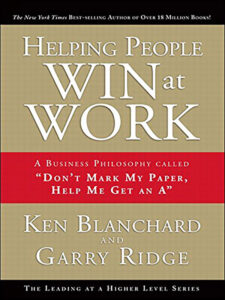
However, if only 20% of the people that are in your organization that have the ability to execute on that plan are engaged, 20 times 50 is 1,000. If 80% of your people go to work every day, are passionate about the purpose, and are learning, free, and empowered, 80 times 50 is 4,000. I’m not sure why people don’t get that it’s the will of the people times the strategy that delivers the best outcome.
It’s pretty straightforward the way you laid it out there. It’s pretty fascinating. I’m working with a client that has some folks who are doing some interviews and some focus groups. Some folks will say, “When people are missing or if they’re not doing their role, I have to step in.”
I have to show this picture from that conference. You talked about ‘the tribe comes first,’ and it relates to that comment I made that I’d love for you to talk about. What does that mean to you? That’s something that at this conference, we had to write out our top phrases from the speakers. That was my top one of what you said. I’d love for you to explain a little bit more about that.
The ‘tribe comes first’ goes back to that desire, want, and need we all have as human beings to belong. We’re tribal by nature. We called ourselves a tribe, not a team at WD-40, not to leverage any of the ancestral assets of indigenous people, but to reflect that as a human race, we are tribal. It goes all the way back to the caveman. He was a member of a tribe.
If you think about a tribe, it’s a place where people can belong. It’s somewhere where learning and teaching are so important. If you think about the number one responsibility of a tribal leader, it is to be a learner and a teacher. If I was to reflect on my home country, Australia, the indigenous people of Australia, thousands of years ago, if we were to be there observing a tribal meeting, what would the tribal leader be doing?
They would be teaching the younger tribe members to throw a boomerang. Why? It’s because the boomerang was the tool of survival. If we weren’t learners and teachers, as leaders, we wouldn’t be helping our tribes succeed. In the book I wrote with Ken Blanchard, which is called Helping People Win at Work, we say, “We’re not here to mark your paper. We’re here to help you get an A.”
Our job as leaders is not to mark people’s papers. It’s to be great coaches and help people get A’s. The whole basis of a tribe is you belong. You are working towards a common goal. You have a just cause together. There’s love, understanding, and care. All of that stuff comes together. If you get the tribe right, then there’s a chance you can execute the strategy and there’s a chance you’ll deliver the rewards to the tribe and to the people who trust you with their investment.
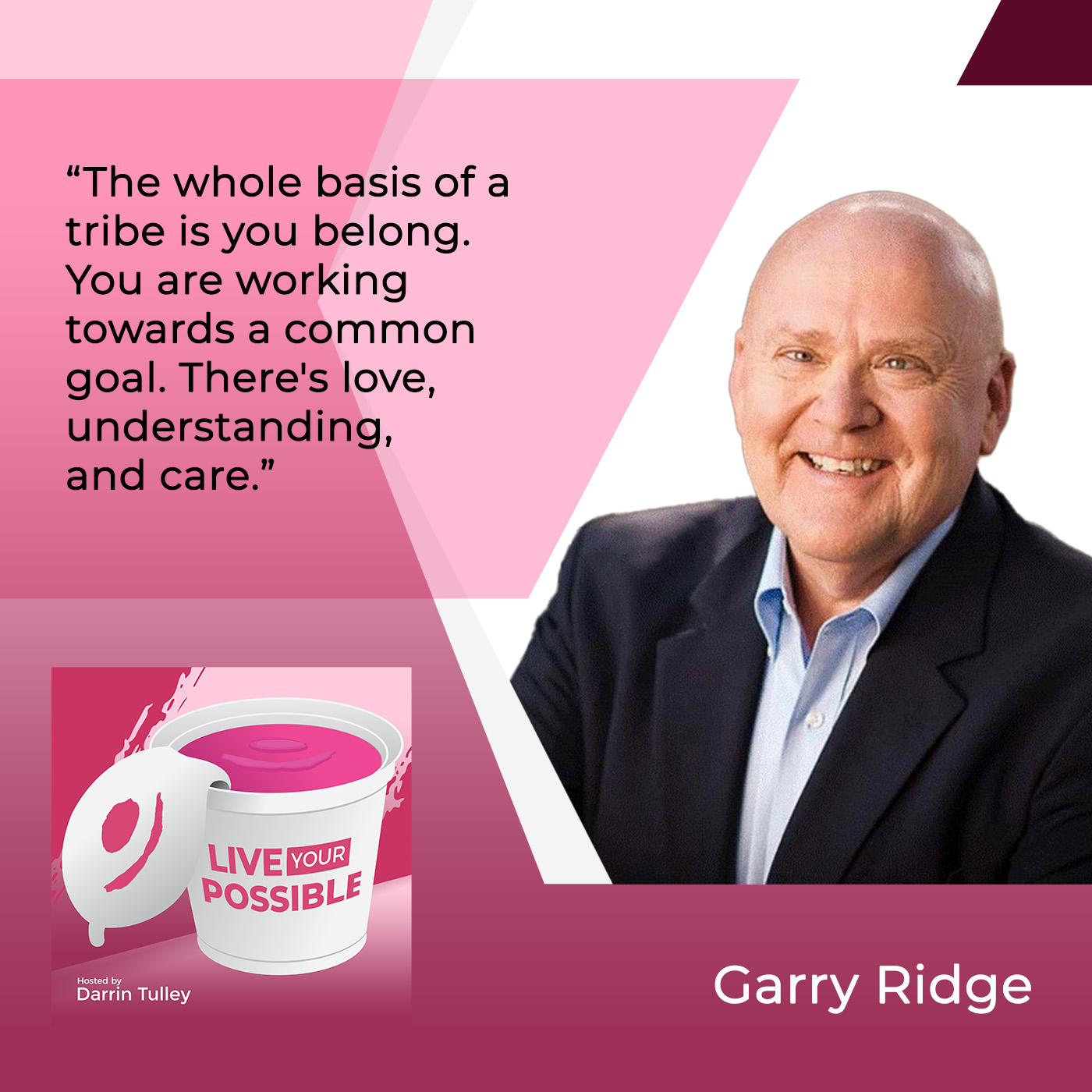
I appreciate many aspects and elements of that, love for each other, being like a family, being able to contribute to something greater, and being able to contribute to the team. In the team I’m working with, it’s almost like there’s a lack of, “I’m going to drop what’s on my desk to help out the greater good of our team.” That’s what you’re talking about here. That’s where cultures come together to something greater with a bigger purpose, bigger meaning, and then bigger impacts too. People are contributing and belong in unique ways.
We used to say, “We’re a group of people that come together to protect and feed each other.” That was our just cause. It’s interesting. We went through COVID together and I was still Chairman and CEO at that time. I only stepped away from that role last August 2022 after 25 years. Halfway through COVID of January 2021, I said to our leadership group, “We need to go and make sure we’re not draining cultural equity because the environment is so different right now.”
Before COVID had started, we’d completed our regular employee opinion survey. The results were up there where they’d been for the prior year. We were feeling pretty good about the culture. We went out in January 2021. In January 2021, as you may recall, we weren’t even confident that we were going to have a vaccine nor were we confident that we’d understood what this COVID thing was.
We went out and did the survey. One result came back, and I went, “That number is surprising to me.” It was 98% of our people said they were excited about their place in the company’s future. I said, “That can’t be right. How can people be excited about their place in the company’s future? We don’t even know if the world’s going to exist.” We dug into that number, and here’s what we learned. People said, “If we have to be anywhere right now, we are feeling safe being here because we are, not just by words, but by acts and deeds, coming together to protect and feed each other.” I went, “That’s what the power of a tribe is.”
It’s setting a culture of joy, trust, and love. You’re helping each other out. There’s been ups and downs at WD-40, and I recall you’ve put questions out to all the employees, “How do we want to solve this?” rather than come from the top. I appreciate that approach. You’re engaging and asking folks to contribute in a way that’s going to do exactly what you said. It’s powerful.
I need all the help I can get. The three most important words I ever learned in my life were, “I don’t know.” I used to introduce myself when I was in my role as, “Good day. I’m Garry Ridge. I’m the consciously incompetent, probably wrong, and roughly right Chairman and CEO of WD-40 Company,” because that was true. I was probably wrong and roughly right. I needed all the help I could get. To get help, you have to win people’s trust and ask for it, “Help me out here. I don’t have all the answers. I need your help.”
To get help, you have to win people's trust and ask for it. Share on XI love your approach. It’s very authentic and vulnerable. Here in the States, we’ve been taught as leaders, “You can’t say, ‘I don’t know,’ and you’re not supposed to ask for help.” Albeit I see that’s changing in what you’re doing as a culture coach and how you’re out there with Ken in the book and many things you’re doing. You’re helping people slow down to learn what it means to be a servant leader, coach up, and help their people thrive in the workplace.
You think about the role of a coach. There are some attributes of a coach in a business that is important. 1) The coach does not run on the field and tries to kick the ball. 2) The coach never goes to the podium to pick up the prize. What is a coach there to do? The coach’s responsibility is, 1), “Do I understand what it takes to win this game?” and 2), “Do I understand the rules that have to be played to help us win this game?”
The coach then does two things. He spends a lot of time on the sideline, observing the play and being brave enough to go to the players that they’re coaching and say, “I saw you take that ball. I saw you take that kick. May I suggest to you that there might have been a different way to play, and if you did, we may have had a better result?”
Secondly, they spend a lot of time in the locker room. What are they doing in the locker room? They’re building trust, bringing the team together, building comradery, engaging in collaboration, and all of those things. That’s the job of a coach. Unfortunately, I’ve introduced you to this person a couple of times. You know who this is, right? (Garry is holding a puppet CEO).
That’s Al. Welcome, Al.
That could be Al or it could be Alice. That person is the soul-sucking CEO of Fear Inc. He or she doesn’t know how to be a great coach. They love to micromanage. They must always be right. They always have the answers. They hate feedback. They think they’re corporate royalty, all of these things. They go to the podium to pick up the prize. What do you think that does to the culture? It destroys the culture.
Out there, we don’t need a lot of Al and Alice leadership of people who are not there to be servant leaders and coaches. We need servant leaders and coaches. The other thing we’ve got to be conscious of is sometimes we protect our own comfort zone at the expense of other people’s development. That’s a bad coach. The bad coach says, “I’m not going to go and have that conversation because I’m going to protect my comfort zone.” That’s not helping the team or the player win.
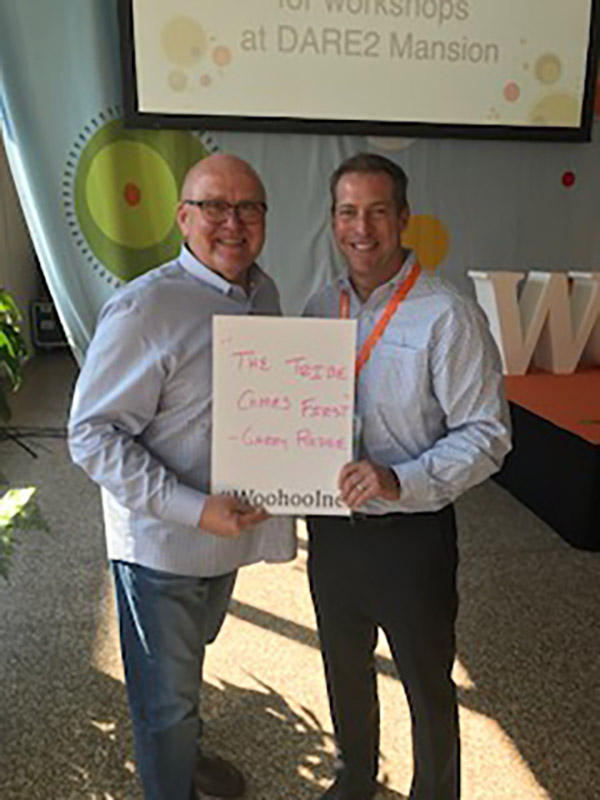
Years ago, I was probably in that space before I recognize I needed to drop my ego and protect my own interest to understand that it is the safe environment that I want to live in and create. I need to be part of that creation. I can’t wait for it to happen. I need to evolve. It’s having that experience with you at the Copenhagen, Denmark conference and learning from you and Richard Sheridan. OC Tanner does amazing work too and The Purpose Summit that you’re a part of. All these elements help us to get real, get authentic, and live with a higher purpose, not a purpose to save ourselves or to stroke our own ego. It’s about empathy. You talk about that as well as far as Al or Alice on how we have to drop our egos and let empathy take over.
Al or Alice’s ego eats their empathy instead of their empathy eating their ego. You mentioned The Purpose Summit. I hope I’ll see you there in May 2023 at Notre Dame. It’s going to be a fabulous event. Davin is putting a great program together. I was there in 2022, and I walked away with goosebumps because we were able to get together with people and show them that purpose-driven organizations provide the platform for not only great performance but people matter. They go home happy and make a difference in the world. It’s going to be a great event in May 2023 at Notre Dame.
I have talked to Davin as well, and I hope to make it. I haven’t committed yet, so I should do that when we get off the call here. I look forward to it. I can’t wait to see what comes out of that. I wrote a book called Live Your Possible. I have you quoted in the book several times. One is around purpose-driven beliefs. It’s the purpose chapter, and I highlight you because it allows us to get outside of what we think is our immediate bubble. It’s making sure we expand on that and invite the world in.
That’s the part where you had a bigger influence on me. It’s to meet people where they are and invite people in together. It’s not about meeting people where I am. It’s about going where people are. You talk about coaching and teaching. I’ve had to make a shift on accepting when coaching is yelling and telling versus teaching and coaching.
We all know leaders that are that way trying to give you the tough love, feeling uncomfortable, rather than what you’ve been talking about, which is creating safety, working with empathy, meeting people where they are, and having people contribute to something bigger. You talk about learning, and I’d love to learn a little bit more from you about how you talk about learning moments, how you get into that space with people, and how you make it safe for people to treat mistakes and other things learning moments.
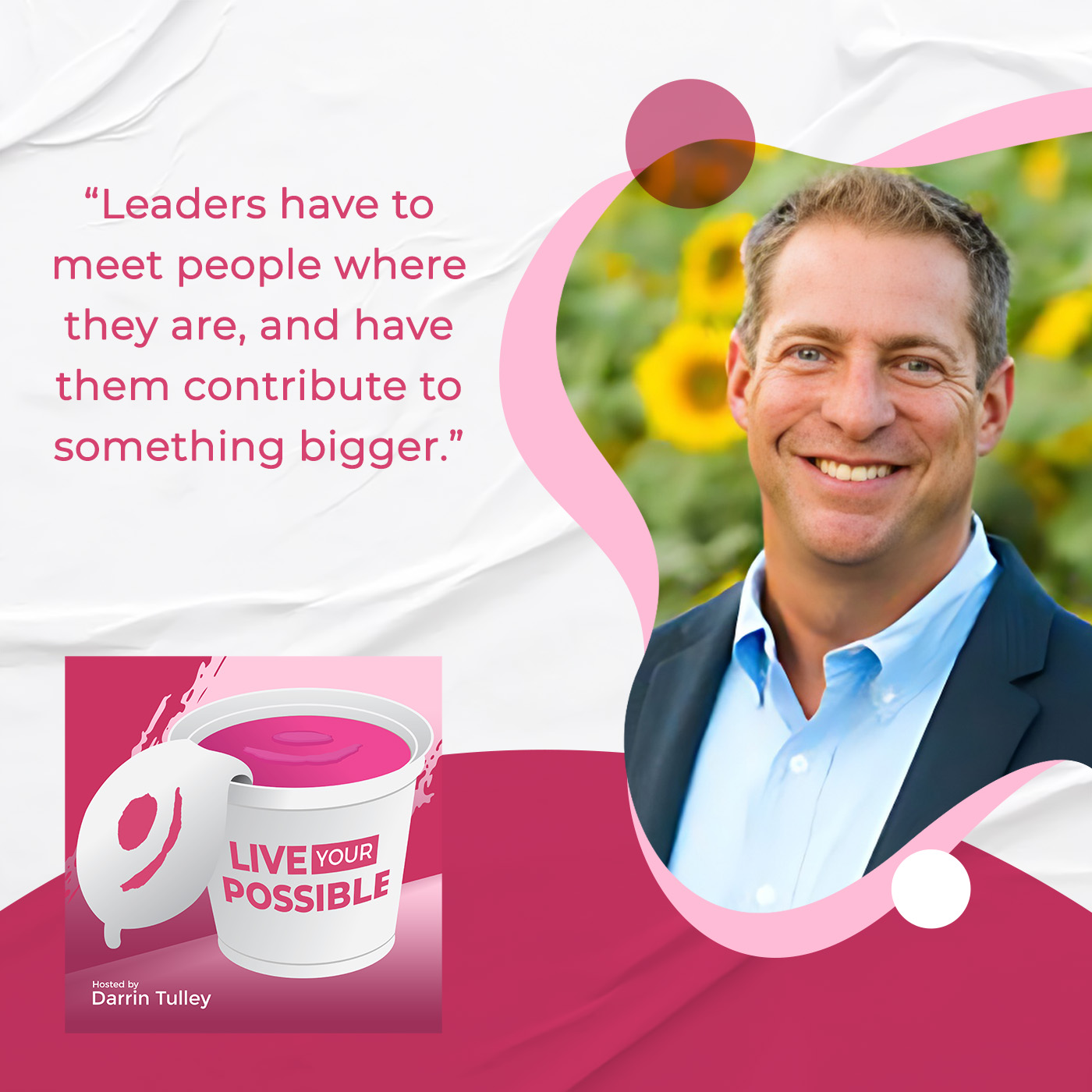
One of the biggest disabilities we have in life is fear. In organizations, I never witnessed a lot of people running around saying, “I feel good. I made a mistake. I failed.” That wasn’t happening. What we knew is that in organizations, everything doesn’t go right, and nor should it. If you think about the best hitters in baseball, out of 1,000 balls, how many do they hit? Is it 300 and something? I don’t know what the number is. (all-start hitters tend to hit around .300).
Why are we creating this environment where people fake and hide? I have this definition of candor. No lying, no faking, no hiding. I believe most people don’t lie. I believe most people fake and hide. Why do they fake and hide? It’s because of fear. Who in their right mind would want to create an environment that encourages people to fake and hide? I know who. Al, the soul-sucking CEO does.
We said, “Let’s take this fear of failure out and turn what is seen as a failure into the catalyst for learning. We’re going to take the word failure out. We don’t make mistakes.” I was speaking to a group of people at a company that I was doing some work with. I got up and said, “I’m going to make a statement that’s going to floor you. I have never made a mistake in my whole life.”
Let's take this fear of failure out and turn what is seen as a failure into the catalyst for learning. Share on XThe audience went nuts. I said, “However, I’ve had millions of learning moments. Let me tell you what a learning moment is. A learning moment is a positive or negative outcome of any situation that needs to be openly and freely shared to benefit all people.” That was why it was important. Let’s not make mistakes. Let’s have learning moments.
Openly sharing, and being transparent, that’s how you learn from the good and the bad, and how we do better.
That’s how we learn. We share those learnings.
Garry, how did you get to this point with your beliefs, people first, and learning moments? Was it your childhood or were there some learning moments along the way throughout your career? How did you get to this place?
I came to the conclusion that I didn’t know everything. I was in a situation where I said, “If I am going to try and build an organization, then I need all the help I can get. Get comfortable with that. Get comfortable with being that way.” That’s what was so important.
How about your upbringing? Would you have some influence from your upbringing in Australia? Were there certain beliefs maybe that influenced how you might have impacted globally and here in the US? Are there things that stand out to you?
I was lucky as I was growing up that I had a lot of people around me that showed me the value of learning, whether it was working in the local sporting goods store, the hardware store, or the dry-cleaning store. Watching them do what they did was so beneficial to me. There was a lot that I found that helped me as I was growing up in Australia.
As far as learning moments for yourself, are there any that you’re willing to share that was worth sharing with folks that you worked with, that was monumental to you, or maybe to the group, or something that moved you?
There’s a couple. One of the big a-ha moments I had was when I read some of the work of the Dalai Lama. I read this statement, “Our purpose in life is to make people happy. If we can’t make them happy, at least don’t hurt them.” What I realized was around organizations, there were a lot of people hurting each other. How could we create an environment where that wasn’t happening?
Our purpose in life is to make people happy. If we can't make them happy, at least don't hurt them. Share on XThe other side you were mentioning, which is so important, is I also, like you, at some stage in my life was protecting my own comfort zone at the expense of someone else’s development. I’ll tell you a true story about how using one of our values to its benefit helped me there. The second value at WD-40 Company is we value creating positive lasting memories in all of our relationships.
I was in a meeting sometime a few years back now, but I can remember it vividly. One of the leaders in the meeting that early morning was not creating a positive lasting memory. What do you do as the leader of that meeting? Al would do this. Al would stop the meeting, reprimand the person, and probably talk them down a little bit, “That doesn’t work.”
That person that you’ve redirected publicly feels embarrassed, and everyone else in the room says, “One day I’m going to be that person. Al’s going to shoot me.” The second thing is you do nothing. That doesn’t work either because you haven’t had the opportunity. That’s when you’re protecting your own comfort zone. When the meeting ended, I said to this person, “Darrin, let’s go for a walk.”
We walked out of our building. I looked behind a car, in a trash can, and behind a tree. Darrin says to me, “What are you doing?” I said, “Darrin, the you I know and love who lives our values every day was not in that room. What’s on your mind? What’s getting in your way?” That opened the conversation and we had a nice conversation. I learned that what was disturbing him was insignificant.
Anyhow, I was able to have that coaching conversation because I didn’t run on the field. I was on the sideline. Now, I was with him in the locker room and it was a great conversation. I noticed him go back into the office later on. He went to a couple of people that were at the meeting and said, “Sorry.” They said, “We know that wasn’t you. Are you okay?”
The next day, they were going to that person and saying, “I just wanted to check in on you. Are you okay?” There’s the tribe, that group of people who come together to protect and feed each other, acting within the bounds of our values that were protecting us and setting us free. We’re being coaches. All of that magic came together. It works.
That’s priceless to have teammates and colleagues pick each other up. There have been lots of moments over the last several years where economically, there are risks, the pandemic, or not having a good day, and people having the trust that the intentions are good. That’s an element, too, that knowing people are going to be open, clear, and working together, assuming good intentions.
You’ve talked about crucial conversations in the past when I’ve talked with you as far as understanding, “How do we show up? Are we assuming the good or are we assuming the person’s out to get me?” The way you approached that coaching situation is you had a pretty good intent to try to bring out the best in that person, not looking at that person in a bad way. You’re there looking out for them.
That’s our responsibility. I have a little sticky note on my computer here and have it in my notebook over there. It says, “Am I being the person I want to be right now?” It lists who that person is. Believe it or not, at my age and after being the CEO of a public company for 25 years, I still have to rely on a little sticky note to keep me centered.
It says, “Who is that person?” This is the person that I have to remind myself I want to be. I want to be grateful, caring, empathetic, reasonable, a listener, fact-based, have a balanced opinion, be curious, be a learner, and throw sunshine, not a shadow. Why do I need the list? It’s because, in leadership, we get pulled out of where we want to be pretty easily. The world yanks at us and we have to continue to bring ourselves back and center ourselves, which is important.
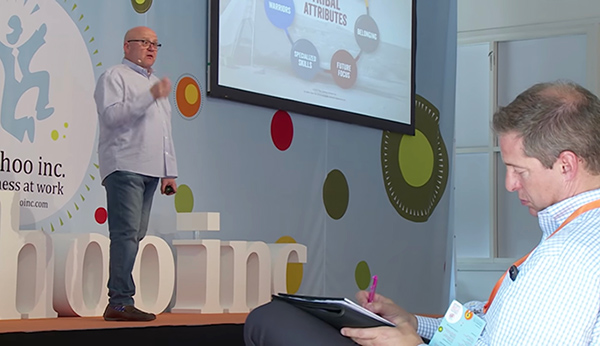
Did that list come together at once, or did that come together over a period of time for you?
Interestingly enough, it came together with a lot of thought. You know of Marshall Goldsmith. He’s one of, if not the premium coach in the world, a friend. I’ve done a number of things with him. We’re in a program called The Life Plan Review and you answer the questions, “Did I do my best to?” One of the questions was, “Did I do my best to find meaning?” I thought to myself, “What does meaning mean?”
I started to think about it a lot. Eventually, I played with the words, “Who do I want to be?” It took me a little while to go through that process with Marshall, reflect, and then come up with the list that I have now. I got a warm heart. I was at a company as I mentioned, and I was talking to one of their leaders about this list. They said, “Could you give me a copy of it?” I did. I got an email. It had a picture of a little heart in it. This person had created their own list, not my words, put it on their computer, and said, “Thank you.” I thought, “That was worth it.”
Impacting one person at a time is a ripple effect for many after, I’m sure. It’s beautiful. The words mean something, especially when you put a value on them and keep them top of mind. I love that you have the sticky note. We all need a sticky note on our desktops to remind us. As you said, sometimes we get distracted or get positioned away from that. How would you encourage a leader to start their list? How would you encourage a leader to start accepting and trying some things related to people first and the things you’ve done?
You have an article which is about Great Escape. There are some good tips in there too. Do you feel there are some things that you could help our readers that want to start down this path? It does take a little bit of work, and I’ve heard you talk about the difference between easy and simple and how you could help us encourage what that might look like. That would be super helpful.
This is simple, not easy, and time isn’t your friend. If a leader comes to the conclusion that our role in life is to help people step into the better version of their personal selves, if our role in life is to help others, if we, as leaders, walking down this leadership path can hold onto someone’s elbow for a little while and help them walk a little further, then we’ve done our job as human beings.
The first thing I would suggest is to think about the statement of Dalai Lama, “Our purpose in life is to make people happy. If we can’t make them happy, at least don’t hurt them.” Make yourself a list of what you’re going to do not to hurt people and then start living it. Look yourself in the mirror and ask yourself those questions, “Who do I want to be?” Ken Blanchard has a great process. He says, “Write your obituary. Now live to it.”
That’s good! How is it working with Ken? You wrote the book together that we mentioned earlier.
I love him. He’s one of the dearest people in my life. He’s one of the most giving sincere servant people I’ve ever met. My life would not be what it is now if I hadn’t had the opportunity to meet, be with, and become dear friends with Ken.
It’s fascinating how folks like yourself, Ken, and my mentor whom I talk with a lot, Richard Sheridan. You know him. You will all pay it forward because you see there is the opportunity to have that ripple effect as you’re looking to make others better, stronger, happier, and everything you mentioned about families and communities. I couldn’t agree with you more. It’s our responsibility and it’s an honor to do that type of work and give back. My commitment is to do the same.
Thank you. We need more of the people in the movement. As Nelson Mandela said, “It always seems impossible until it’s done, so let’s make it possible.”
It always seems impossible till it's done, so let's make it possible. Share on XWhat’s ahead for you and how can we get folks to line up with you? You have The Learning Moment. You’re the Chairman of WD-40. You’re doing The Purpose Summit. What’s ahead and what could we look out for with you and how could we work with you down the road?
Thank you. I’m Chairman Emeritus of WD-40 now, which means I have no authority and no responsibility, but I can go to any party I like. That’s great. I’m coaching CEOs. I finished the proposal for my new book, which is called Any Dumbass Can Do It. That’s something. I’m doing what I can to help leaders be aware. That’s why I’m here with you. I’m so grateful that you are helping me. You and I together get the message out there that we can make a difference in the world by creating cultures where people like going to work and feel fulfilled. Follow me on LinkedIn. I post on LinkedIn all the time, trying to get the word of learning out there, exposing my scar tissue as much as I can because I have plenty of it. That’s what I’m working at.
I appreciate you sharing all that and particularly the scar tissue. It’s so important to be vulnerable and courageous to do that in the spirit of learning and helping make it safe for others as you do every day by example. I noticed you have hundreds of thousands of followers. I said to myself, “Is that important?” What I thought about is those followers are believers.
If we’re all believers and if we could add more believers to what we’re talking about, could you imagine what we could do to society and our world every day if we could get more people thinking about happiness and empathy? I’ll say inclusion because all the work that you’re doing is bringing people together and being more inclusive and open-minded with curiosity.
Life’s a gift. Don’t send it back unwrapped.
I love it. Is there anything else you’d to share with our audience?
No, I want to thank you. Thank you for all that you’re doing. I appreciate you and thank you for helping get the word out there. It was an absolute gratitude moment that I got to meet you. I’m so pleased to see you carrying the flag out there and continuing to let people know what we can do to make a difference. You get my YAY for the day.
I appreciate that. I got to say thank you again. It’s such an honor to work with you and be on this call again. You moved me back in 2018. You’re a big part of the change that I made. Check out Chapter 14 in my book to see some of the changes I’m making out there. You’re one of the influences, yourself, Rich, and some others that I’ve mentioned. I am carrying the torch. I admire what you’re doing. Like at the conference in 2018, I still have a front-row seat watching you go. I’m supporting you and people first everywhere. I’m a big believer and fan, and we’ll continue to carry the torch. I look forward to hopefully seeing you in May 2023.
Please be there. Thanks much for having me on.
Thank you for coming. Take care.
—
I love being in the presence of Garry Ridge. I love being in the front-row seat of his work. I’m a true believer. Garry has been on a mission to create more happiness in this world for over 25 years, probably longer, and leads by example in everything he does. He’s improving our world by giving humanity a chance to thrive daily.
I am honored to be influenced by his thinking to carry the torch with him. Join us on this mission. He checks his sticky note every day to see if he’s being the leader he wants to be. What a great idea for us to follow. Write down 1 to 2 words on a sticky note about what you’ll want to be known for as a leader and actively self-reflect on this throughout the day. Put the sticky note up on your PC or your laptop. Keep it close to your heart as you lead with a purpose.
As you inspect and self-reflect, please don’t beat yourself up and treat it as a learning moment, to be honest with yourself, with a greater purpose, and to serve others with empathy and care. When you feel comfortable, openly share what it is you’re learning. Make it safe for others to do the same as you courageously talk about what you’re learning and how you’re being as a leader you want to become as your authentic self.
Also, try using the words, “I don’t know,” more often, and invite people to the table to help you resolve issues together like Garry did. Garry reinforces what matters at work. (People matter). The cultures at work as a tribe and a team are there for each other through the good and bad times, and he has so many wonderful examples that he has shared.
Let’s follow Garry and be an active believer. Take a look at his articles. Check him out at The Purpose Summit. Take the time to think about how you can make an impact because it starts with each of us, not only at work, yet in our communities and our families too. Be the leader you want to be and always remember to ignite your happy, authentic self and live your possible.
Important Links
- WD-40 Company
- Helping People Win at Work: A Business Philosophy Called “Don’t Mark My Paper, Help Me Get an A.”
- The Purpose Summit
- The Life Plan Review
- The Learning Moment
- LinkedIn – Garry Ridge
- https://IgniteHappy.com/chapter8/
- https://www.YouTube.com/watch?v=Tj8qVj3WrPU
- Great Escape – LinkedIn Article
About Garry Ridge
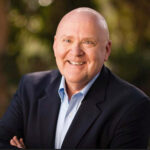 The Culture Coach – Chairman Emeritus WD-40 Company
The Culture Coach – Chairman Emeritus WD-40 Company
Garry has 25 years of experience as Chairman and CEO of WD-40 Company. He is also an adjunct professor at the University of San Diego, where he teaches the principles and practices of corporate culture in the Master of Science in Executive Leadership program.
Garry’s philosophy on company culture is based on Aristotle’s quote – “Pleasure in the job puts perfection in the work.” Turning that into action, he believes that all leaders can create a workplace where you go to work each day, make a contribution to something bigger than yourself, learn something new, feel safe, are protected, and are provided freedom by a set of values and go home happy! He is passionate about the learning and empowering organizational culture he has helped establish at the WD-40 Company.
In 2009, he co-authored a book with Ken Blanchard outlining his effective leadership techniques, titled “Helping People Win at Work: A Business Philosophy Called ‘Don’t Mark My Paper, Help Me Get an A.” A native of Australia, Mr. Ridge holds a certificate in Modern Retailing and a Master of Science in Executive Leadership from the University of San Diego.
